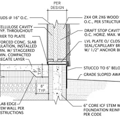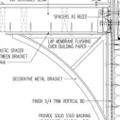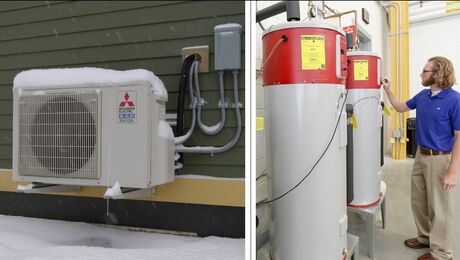Exterior/Interior insulation ratios – 2×4 insulation in a 2×6 wall?
I will be using 3″ exterior GPS foam on my house (R 14.5). The walls will be 24″ o.c. 2×6. I want to use Rockwool bc of its properties over fiberglass; however, it would give me an r-23 in the cavity. This would give me an exterior/interior ratio of 38 (total r-value of 37.5); just above the recommended minimum. I was thinking of using 2×4 Rockwool (R 15) (instead of the 2×6). This would give me an exterior/interior ratio of 49 (total r-value of 29.5). I would tac in place using furring strips.
I’m not sure which to go with. I feel like the thinner interior insulation will allow for better interior drying potential. I understand I’m giving up total r-value, but also know there is an exponential lose in returns after R 22. I will also be using a smart vapor barrier as well. I live in climate zone 6.
GBA Detail Library
A collection of one thousand construction details organized by climate and house part










Replies
The rule for CZ 6 according to Martin Holladay's article "Rethinking the Rules on Minimum Foam Thickness" puts about 33% of the total R value on the exterior of the wall, with rigid foam. You have about 39% on the exterior, so you're going to be fine. Note that the article actually calls out a minimum R value for the exterior insulation of R11.25 for your 2x6 walls, so you're over that in absolute terms.
You can put as much MORE R value on the EXTERIOR as you want. That's the "safe" side. Beefing up ONLY the interior is where you can get into trouble.
I would go with the full depth R23 mineral wool batts on the interior and not worry about it. Thinner batts won't really do anything regarding drying, because mineral wool is very vapor open regardless of the thickness of the batts.
Bill
Thanks for taking the time to reply!
pietrasm5,
As Bill said, you are well over the minimum R value (11.25) for exterior insulation on a 2"x6" wall in zone 6. You are fine completely filling the stud bays.
https://www.greenbuildingadvisor.com/article/calculating-the-minimum-thickness-of-rigid-foam-sheathing